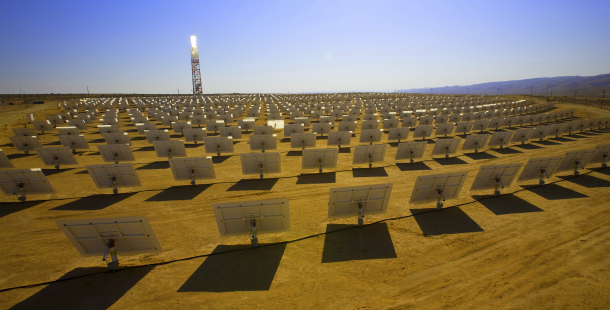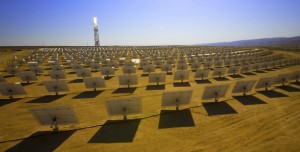Google has invested significant money and employee time in clean-energy technologies over the past few years but recent job openings point to stepped-up efforts to build its own products.
There are currently five renewable-energy engineer job openings listed on Google’s job site, including a top manager position at its Mountain View, Calif., headquarters that hints at Google’s bigger ambitions.
The “head of renewable energy engineering” will lead a research and development team within Google to lower the cost of renewable energy. “As the engineering leader of Google’s clean energy initiative, you will be responsible for building a team of top technologists to develop disruptive new technologies that dramatically lower the cost of renewable electricity – with the goal of making renewable energy cheaper than coal within a few years,” according to the job posting.

One of the job openings at Google is to work on heliostats, or sun-tracking mirrors used to concentrate light and produce heat in concentrating solar systems. (Credit: BrightSource Energy)
The other job openings specify skills in designing and prototyping utility-scale renewable-energy systems. Google is seeking people able to assess and create different renewable-energy technologies with the potential to be cheaper than coal-generated electricity, including solar, wind, enhanced geothermal, and other “breakthrough technologies,” according to a listing. Another job is geared at making Google’s operations more sustainable, such as reducing its energy use and achieving the corporate goal of carbon neutrality.
Google first launched its renewable energy cheaper than coal initiative in 2007. The company invested in a few start-ups and took a number of measures to improve the efficiency of its operations. In the past several months, though, Google has sped up its activity in renewable energy.
In April, its Google Energy subsidiary invested directly in a wind farm in Oklahoma located near a planned Google data center. Altogether, Google has also invested more than $400 million in renewable energy, including a large wind farm in Oregon and a large solar project in California earlier this year.
Yesterday, it announced that it is expanding to 450 electric-vehicle charging stations on its campuses, acting as a corporate customer to advance electric-vehicle technology.
Through its philanthropy Google.org, Google invested in start-ups, including high-wind company Makani Power, enhanced geothermal companies, and solar company BrightSource Energy, which filed to go public earlier this year. The company also developed PowerMeter, a home energy monitoring Web application, the only energy-related product Google has released.
In 2010, Google’s green-energy czar Bill Weihl said that engineers had built a prototype of a sun-tracking mirror called a heliostat which could lower the cost of solar energy. Weihl also told Reuters that Google was discouraged in the amount of money going into early-stage renewable-energy technologies.
By expanding its internal research and development around clean energy, Google appears to be stepping up its commitment to develop more technologies internally.
Source


 Follow
Follow

